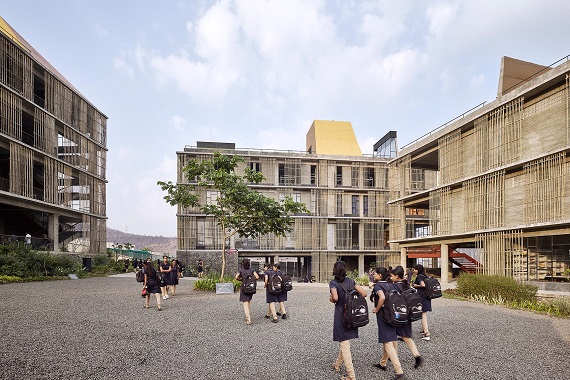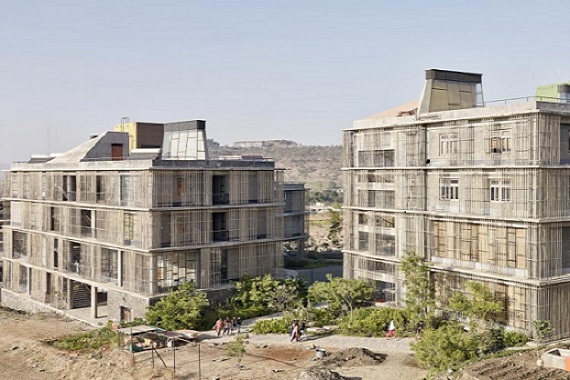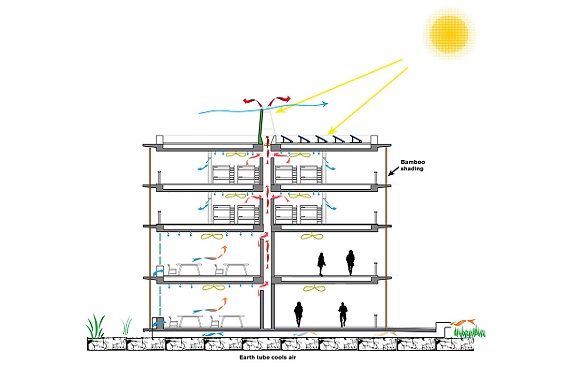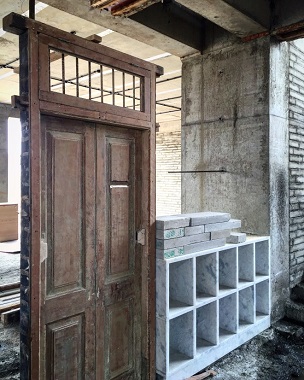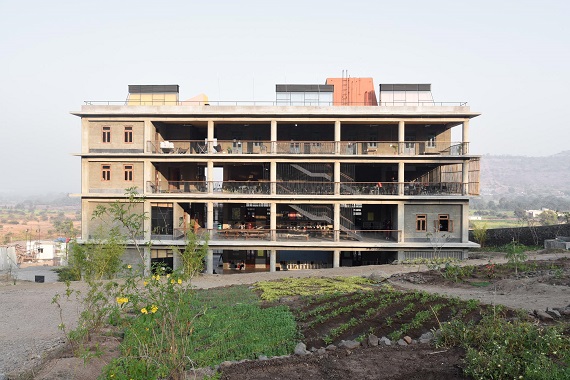Avasara Academy
Lavale, Pune
Summary
| Location | Pune |
| Coordinates | 18° N, 73° E |
| Occupancy Type | Academic |
| Typology | New Construction |
| Climate Type | Warm and Humid |
| Project Area | 11,148 m2 |
| Date of Completion | 2020 |
| Grid Connectivity | Grid-connected |
| Architect | Case Design |
| Energy Consultants | Transsolar KlimaEngineering |
Avasara Academy, a residential school campus located in the rocky agrarian valley of Lavale in Maharashtra, consists of six similar buildings, each with classrooms on level 1 and 2, and student dormitory and faculty residences on level 3 and 4. Its uncompromising architecture is simple, climate-oriented, functional, sustainable, flexible, affordable, aesthetical, visually exciting and inclusive.
Avasara, with high ambition, a modest budget, and scrupulous attention to detail, achieves comfortable internal condition and nearly net-zero energy status without the use of any mechanical system despite the warm and humid climate. Additionally, use of local resources and passive heating-cooling systems design reduced the initial construction cost by approximately 7% and annual energy cost by nearly 80%.
Photovoltaic solar panels on the building roof provide electricity for ceiling fans and electric lighting in the building, while solar water heaters provide hot water for showers. Together, this accounts for around 85% of the energy requirement of the building.

